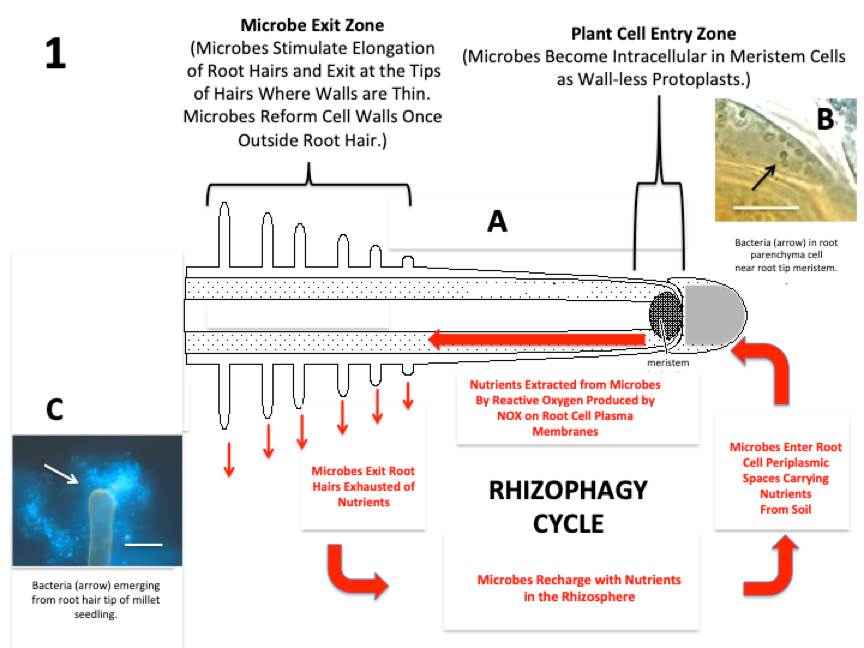How plants use endophytes in the rhizophagy cycle
Learn about how plants cultivate soil microbes on roots, and later absorb microbes into root cells to extract nutrients from them in the rhizophagy cycle. You will learn why it is important to preserve and manage healthy soil biology—and how plants use soil microbes to obtain soil nutrients, to become more stress tolerant and defend themselves from pathogens.
In this course James White describes the hidden interactions that occur between plants, soil microbes and soils.
Success of these hidden interactions demand that plants are grown in soils with a healthy and diverse microbial community. In essence plants ‘farm’ (or cultivate) microbes on roots, using the microbes to mine for nutrients in soils. Afterward, plants then absorb microbes into root cells to extract nutrients from them in the rhizophagy cycle.
Topics covered in the course are the following:
- What are endophytic microbes?
- What benefits do plants get from endophytic microbes?
- How plants ‘farm’ microbes in the rhizophagy cycle to acquire soil nutrients.
- How plant biostimulant products work.
- Other nutritional symbioses between plants and soil microbes.
This course provides a foundation of knowledge of soil and plant microbiology for students and practitioners of regenerative agriculture.
You can learn about the rhizophagy cycle in a podcast interview here and read more in the linked papers.
Rhizophagy Cycle: An Oxidative Process in Plants for Nutrient Extraction from Symbiotic Microbes
This course includes 5 video lessons and quizzes and takes approximately 6 hours to complete.
CEUs: 2.50 Nutrient Management
CEUs: 2.50 Soil & Water Management
Cost
KindHarvest Current Member Price: $155 (Active Members Click Here to log in)
KindHarvest Course and one month access: $163 ($8.00 per month recurring)
KindHarvest Course and one month access: $207 ($82.00 per year recurring)


